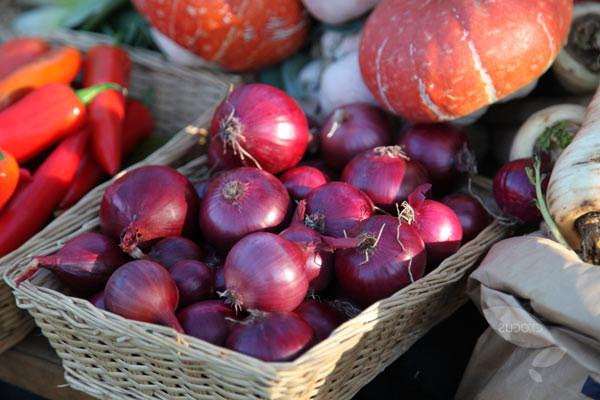Red onion red onion refers to varieties of salad onions. It is well adapted to growing in various conditions. Well kept in any form.
Table of contents
Description and characteristics of the variety
Let's start with the description of red baron. The peculiarities of this type include beautiful rich red color of the bulbs.. They are distinguished by a round, slightly flattened form with a rather dense structure of the upper layer (husk).It has fleshy, juicy flesh with purple-red veins on a white-pink background.
The variety is characterized by medium early ripening. It is possible to collect onions in three months, after landing. Fruits reach from 24 to 120 grams. Possess a pleasant aroma, sweetish taste (less spicy than that of ordinary varieties).
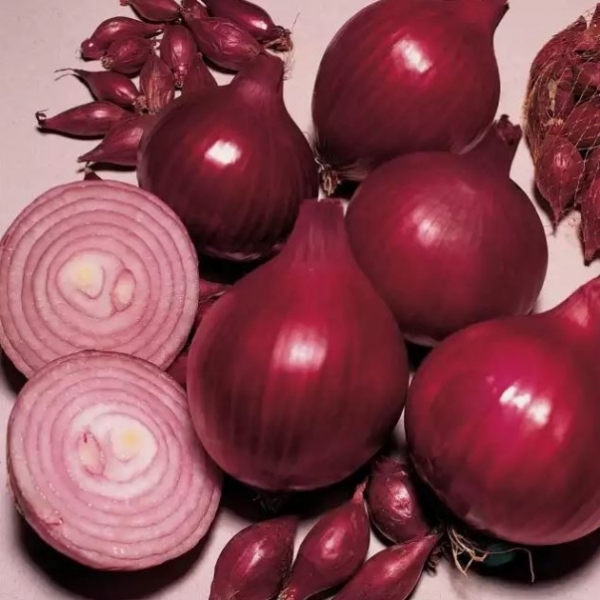
Thanks to these qualities, "Red Baron" is widely used in cooking and harvesting vegetable dishes.
Advantages of Red Baron
Red onion is considered an active fighter against various infections, cholesterol, diabetes. Due to the increased content of antioxidants, it helps the body fight cancer diseases, slows the aging process of cells. The most useful are the upper, most succulent parts of the bulb.
Vegetable contains a large amount of various minerals and vitamins. For example, the amount of vitamin C, can reach 6.2 mg.
In addition to the rapid maturation and a large set of useful qualities, the advantages include:
- High stable yields (up to 3 kg per 1 m²) under any climatic conditions.
- Beautiful presentation and taste.
- Long storage.
- Resistance to drought and disease. This is achieved through a well-developed, strong root system of this variety.
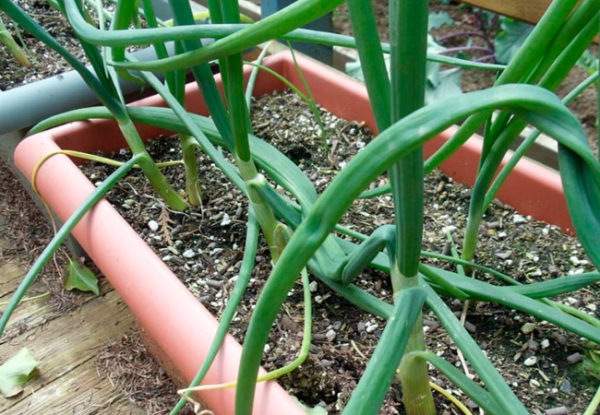
Red onion Baron can be grown in the northern regions, as it tolerates early frosts.
Time to land
The best time to disembark, is a steady weather, the absence of night frosts. This usually occurs in late April or early mid-May (southern and middle regions). In the northern strip - landing is made later, the first of June.
You can grow onions with seedlings. This is a cheaper way, but is associated with greater hassle in the process of preparing for disembarkation. Grown from seedlings onions, does not give the shooter, allows you to get turnips in the same year.They are poorly preserved until spring, but are suitable for planting in the fall - before winter.
The landing should be done at a temperature of:
- Air: in the daytime 0 +5 ° С, at night - about -3 ° С.
- Soil: the earth should not be too warm to +4 ° C
This is usually done in October, early November. The main thing is that sevok rooted before the onset of frost, and did not have time to let the green arrows.
Advantages of landing in the winter:
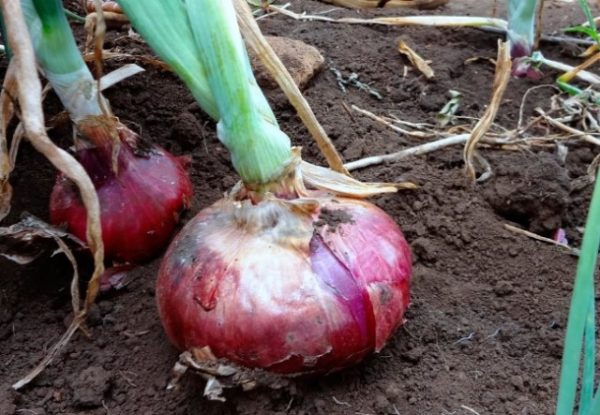
- Earlier maturation.
- The bulb is less subject, a different sort, to diseases.
- No need to spend time in the spring for planting and care of seedlings.
The negative factors include:
- Spring stagnation of water in the garden.
- Too deep and early landing.
- Frequent temperature drops. The bulb freezes and thaws several times.
Preparing a landing site
In order for the harvest to be good, it is necessary to take care of the plot where the planting will take place. For this you need:
- Choose a sufficiently illuminated and dry part of the site. Well suited places where they used to grow potatoes, cucumbers, tomatoes or beans.
- The beds are made higher for low places.
- The earth is dug up and fertilized.You need to add two buckets of peat, half a bucket of humus, a glass of wood ash, a tablespoon of superphosphate. Autumn can be two. All this is based on 1 m².
In the spring, after the earth thaws, the beds are fertilized with ammonium nitrate. Teaspoon per square meter.
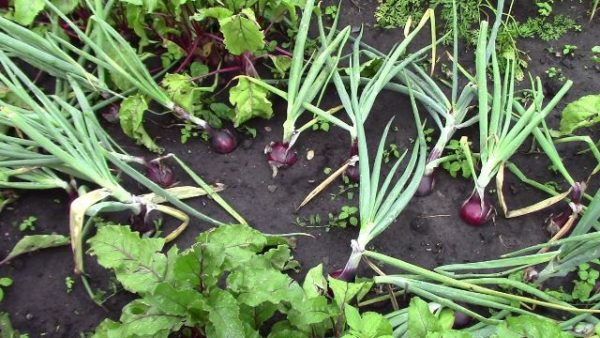
Landing features
Planted red baron, you can in different ways:
- Onion sets. To speed up germination, onions are soaked in water (35 - 38 ° C) for up to 15 hours. Sevka is pressed into the wet, loose, cleared land of weeds. The depth should be about 4 cm. The distance between the onions is up to 10 cm, and the beds are approximately 20 cm. The comfortable temperature for planting is 10 - 15 ° C. The bulb tip is cut (3-4 days before sowing). This will give faster and juicy shoots of green onion feathers. This method of sowing does not require a large number of additional fertilizers. Enough pre-cooked soil.
- Seeds. After preparing the soil and beds, small grooves are made. The distance between them is 15 cm, depth - 1.5 cm. After shedding the place of sowing with warm water, seeds are sown (1 - 1.5 cm between them).After sowing, the seeds priprashivayutsya peat or earth (1 cm). At the end, the beds are closed with a film. To remove the film is necessary after the appearance of the first shoots. So that they will not burn in the sun, further (until June) they can be protected with the help of non-woven materials, lutrasil or spunbond.
- Seedlings. Saplings are prepared at home from seed. They are sown in special boxes or cassettes (end of April, March). Before planting in the ground, seedlings are divided among themselves. Each plant deepens by 1 cm. Distance 5 cm from each other. After watering, each landing site is mulched with peat.
Seeds for open ground and seedlings are prepared in the same way:
- Soaked in manganese solution (1 g. Per liter of water), for 45 - 60 minutes.
- Poured a solution of the drug "Epin" (according to instructions) for 18 hours.
- Dry to a free flowing state.
Departure after landing
Watering the seedlings is necessary regularly, during the first month (5-7 days - 1 time). If there is a strong heat - twice every week. After heavy rains, watering - the ground must be loosened and weeds removed.
During the formation of the bulbs, the plant is fertilized with fertilizers (phosphates, potassium sulfate).Added organic types of bait (mullein, chicken manure). It is better to dilute in water, according to the instructions and use during watering once a month.
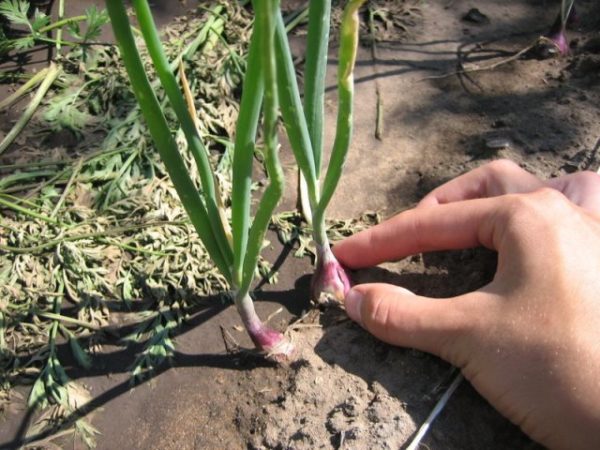
Around the middle of summer, watering and feeding stops. This is due to the ripening of turnips. Too much moisture and fertilizer can spoil them.
After the appearance of the first feathers, the plants are necessarily thinned. Removed the weakest shoots. Gradually, the distance between each of the remaining 6 to 10 cm is brought in. Such measures contribute to a good harvest and large size of the bulbs.
Disease and pest prevention
Protection from onion flies, are:
- Timely weeding beds.
- Timely disinfection of the soil (sprinkling with ash, sand mixture with naphthalene - 20 to 1).
- Treatment of plants with insecticide (Medvetoks, fly-eater, Aktara, etc.).
The appearance of fluffy greyish plaque on the leaves indicates that the plant is affected by peronosporosis (downy mildew). This threatens to soften the bulbs, the death of the leaves. For prevention it is necessary:
- Treat the beds with 1% borka compound (before planting).
- Spray the plants with Rodomil Gold MC (when 4-6 feathers appeared).
Do not abuse the watering. Excess moisture will damage the root system. As a result, there will be a rotting of the turnip itself.
Harvesting and Storage
Cleaning red baron occurs after the feathers will fall down (end of summer). Onions should be removed from the beds, dried on the ground. Then, cutting the roots, it is dried in air or in a ventilated room. Tails can be tied into bundles, pigtails or cut. You can not leave the crop in direct, scorching sunlight.
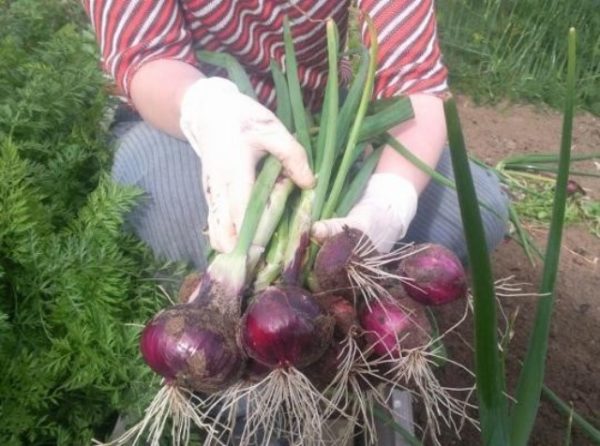
After drying, the onions are sorted and prepared for storage. You can save it in several ways:
- Fold in thick polyethylene bags. This type of packaging can be kept in the cellar or refrigerator.
- Braided onion pigtails, hung out in a cool, dry place (closet).
The main condition for preservation, is a good drying, health and integrity of the bulbs.
The correct approach to the cultivation, planting and care - will allow to rightfully assess the merits and taste of the "Red Baron".The ability to preserve it for a long time will provide you with antioxidants and useful vitamins until the next harvest.
